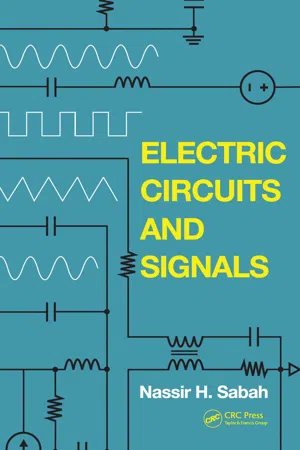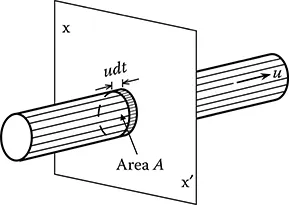
- 896 pages
- English
- ePUB (mobile friendly)
- Available on iOS & Android
Electric Circuits and Signals
About This Book
Solving circuit problems is less a matter of knowing what steps to follow than why those steps are necessary. And knowing the why stems from an in-depth understanding of the underlying concepts and theoretical basis of electric circuits. Setting the benchmark for a modern approach to this fundamental topic, Nassir Sabah's Electric Circuits and Signals supplies a comprehensive, intuitive, conceptual, and hands-on introduction with an emphasis on creative problem solving.
A Professional Education
Ideal for electrical engineering majors as a first step, this phenomenal textbook also builds a core knowledge in the basic theory, concepts, and techniques of circuit analysis, behavior, and operation for students following tracks in such areas as computer engineering, communications engineering, electronics, mechatronics, electric power, and control systems. The author uses hundreds of case studies, examples, exercises, and homework problems to build a strong understanding of how to apply theory to problems in a variety of both familiar and unfamiliar contexts. Your students will be able to approach any problem with total confidence. Coverage ranges from the basics of dc and ac circuits to transients, energy storage elements, natural responses and convolution, two-port circuits, Laplace and Fourier transforms, signal processing, and operational amplifiers.
Modern Tools for Tomorrow's Innovators
Along with a conceptual approach to the material, this truly modern text uses PSpice simulations with schematic Capture® as well as MATLAB® commands to give students hands-on experience with the tools they will use after graduation.
Classroom Extras
When you adopt Electric Circuits and Signals, you will receive a complete solutions manual along with its downloadable resources supplying additional material.
Frequently asked questions
Information
1
Circuit Variables and Elements
Overview
Learning Objectives
- To be familiar with:
- The general nature of electric resistance in metals
- The nature of the assumptions made in basic circuit theory
- To understand:
- The basic circuit concepts of current, voltage, and power
- How power absorbed or power delivered by a circuit element is related to the assigned positive directions of current through the element and voltage drop or rise across the element
- The attributes of independent and dependent, ideal voltage sources and ideal current sources
- The attributes of an ideal resistor, Ohm’s law, and the power dissipated in a resistor
- The attributes of an ideal capacitor and an ideal inductor, their voltage—current relations, and the energy they store
1.1 Electric Current
- The dimensions of the quantities in Equation 1.1.1 are:Quantities on the RHS cancel out between numerators and denominators, leaving C/s. It is helpful to check the dimensions of all defining relations so as to gain a better appreciation of the quantities involved.
 FIGURE 1.1.1
FIGURE 1.1.1
Flow of electric charges in a conducting medium. - Unlike charge, which has only magnitude and sign, current is, in general, a vector quantity that has both magnitude and direction. By convention, and for purely historical reasons, the direction of current is considered as that of motion of positive electric charges. In Equation 1.1.1, e is positive, so that i has the same sign as u. If the particles are negatively charged, e is negative, and the direction of i is opposite that of u.
- In the presence of an electric field, positive and negative charges experience forces in opposite directions. As a result, positive charges move in the direction of the electric field, whereas negative charges move in the opposite direction. However, the direction of current is the same for both positive and negative charges because, in the case of negative charges, the signs of both e and u in Equation 1.1.1 change simultaneously.
Current Carriers
Table of contents
- Cover
- Half title
- Supplementary Resources Disclaimer
- Title Page
- Copyright Page
- Dedication
- Table of Contents
- Preface
- Prologue: Solving Circuit Problems
- Foreword: Historical Landmarks, Nature, and Relevance of Electric Circuits
- Units, Symbols, Acronyms, and Abbreviations
- 1 Circuit Variables and Elements
- 2 Basic Circuit Connections and Laws
- 3 Basic Analysis of Resistive Circuits
- 4 Circuit Simplification
- 5 Sinusoidal Steady State
- 6 Linear and Ideal Transformers
- 7 Power Relations and Circuit Measurements
- 8 Balanced Three-Phase Systems
- 9 Responses to Periodic Inputs
- 10 Frequency Responses
- 11 Duality and Energy-Storage Elements
- 12 Natural Responses and Convolution
- 13 Switched Circuits
- 14 Two-Port Circuits
- 15 Laplace Transform
- 16 Fourier Transform
- 17 Basic Signal Processing Operations
- 18 Signal Processing Using Operational Amplifiers
- 19 Electric Circuit Analogs of Nonelectrical Systems
- Appendix: Reference Material
- Bibliography
- Index